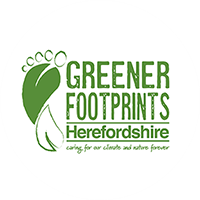
Colleagues from Herefordshire Council’s Sustainability and Climate Change Team, 4R Reassurance, and farmers engaged in the carbon audit project, gathered at Townsend Farm for the second in a series of farm carbon workshops funded by Herefordshire Council.
Ben Taylor Davies and Paul Wyhatt of 4R Reassurance talked about methods for composting on the farm, and things to consider to get the most out of the process.
Jonathan Lloyd, also of 4R, talked the group through soil and manure analysis, how to interpret results, and importantly, how to take action when not getting the results you want on the farm.
Methods of on-farm composting
Ben Taylor Davies talked through 2 methods of on-farm composting which he uses to improve the health of the soils across his farm.
Ben demonstrated how a Johnson Su bioreactor can be built within an IBC tote, which is filled with shredded compost material, studded with 4” drainpipes to ensure the decomposition process is aerobic. Maturation takes as much as 400 days, but once mature, the compost can be applied as an extract, mixed as a slurry to coat seeds, or applied directly as a soil amendment. You can find full description of this method and Ben’s own trial of scaling up the operation here.
Bokashi composting, which involves combining material with effective microorganisms (EM1) and facilitating anaerobic decomposition, produces a compost material that maintains much of the nutrient content held in the original material. Ben talked through how he takes advantage of this process in the cow barn, where layering of bedding material, combined with the fermentation catalyst (EM1) and the compression offered by the cows, provides the necessary environment to produce an anaerobic ferment. This carbon and nutrient rich material can be spread on fields in as little as 12 weeks. Read more about bokashi composting here.
Paul Wyhatt, technical director of 4R, talked through the importance of bearing in mind source material, particle size and turning frequency in making a successful, high quality soil amendment when using the windrow composting method. You can view the presentation slides from Paul here.
Understanding soil and manure analysis
Considering the indices seen in typical soil and manure analyses, Jonathan Lloyd talked through what results might look like, what they could mean in real terms and how to go about making use of this info to get more from your soil and/or manure. Highlighted in his presentation was the importance of having tests done to understand your soil, and any amendments like manure you might be applying. There can be huge variation in the nutrients of different manures! Going by assumptions or comparing to standards may be misleading – to get the best results from manure and compost application, know your numbers, first. You can view the presentation slides from Jonathan here.

